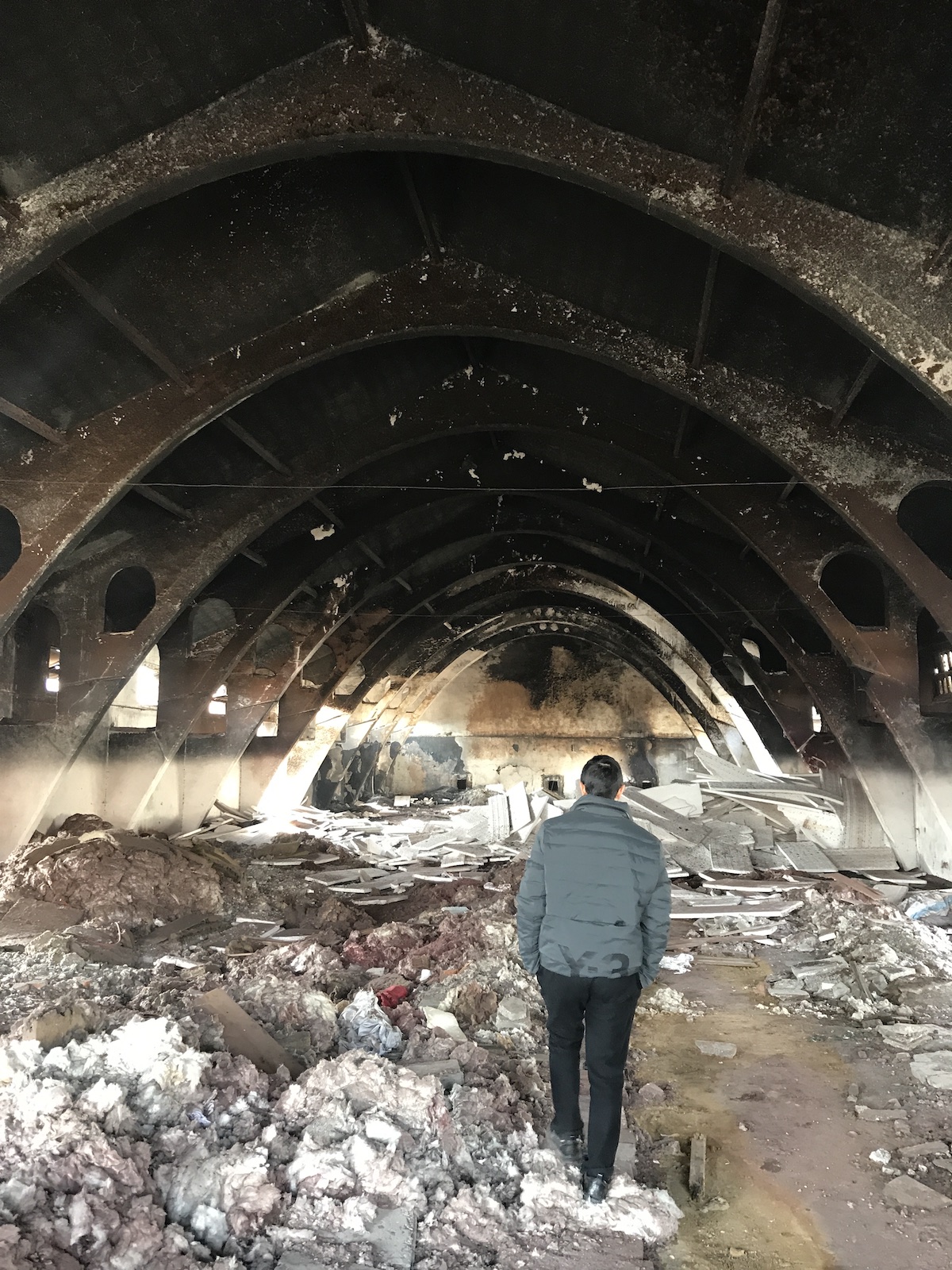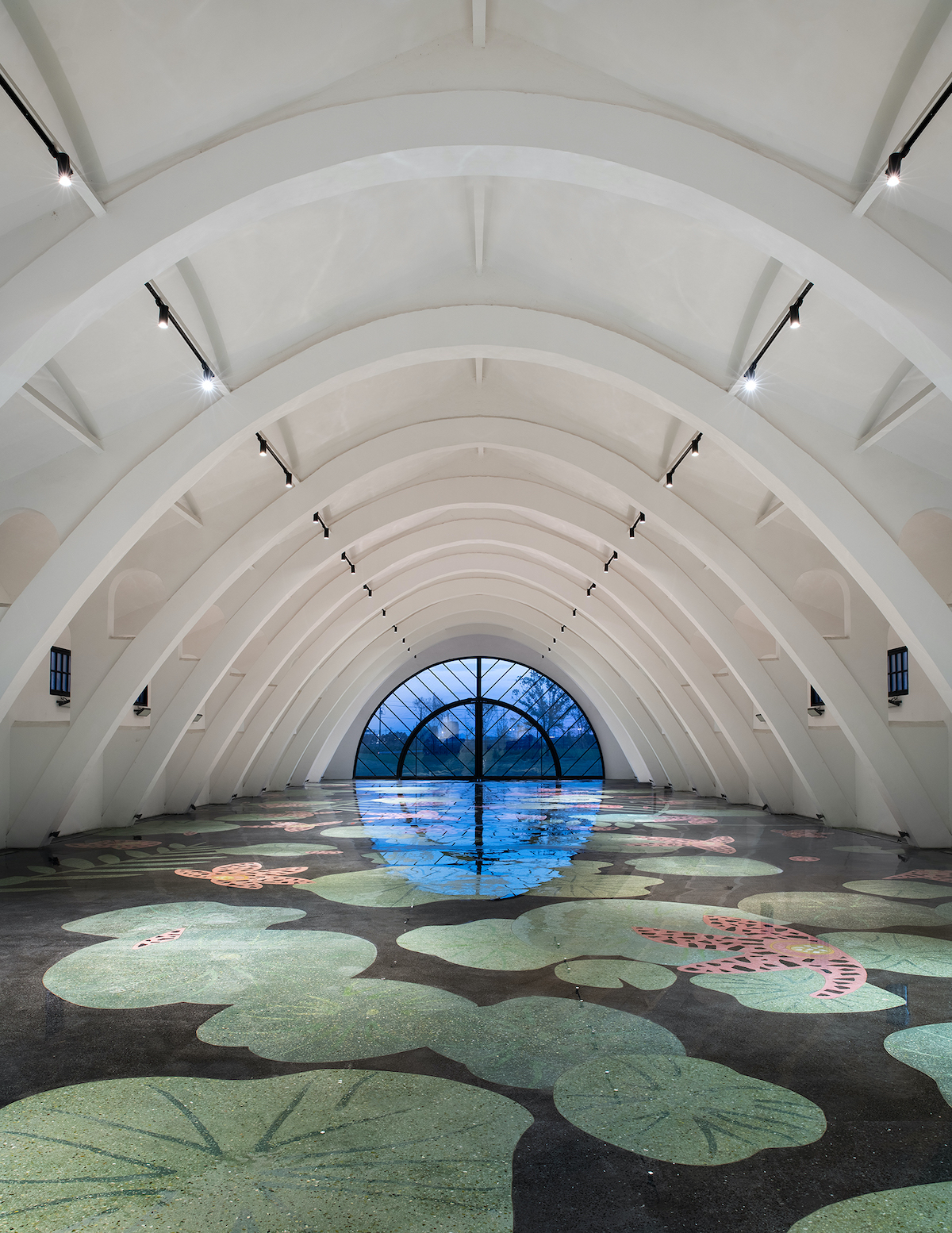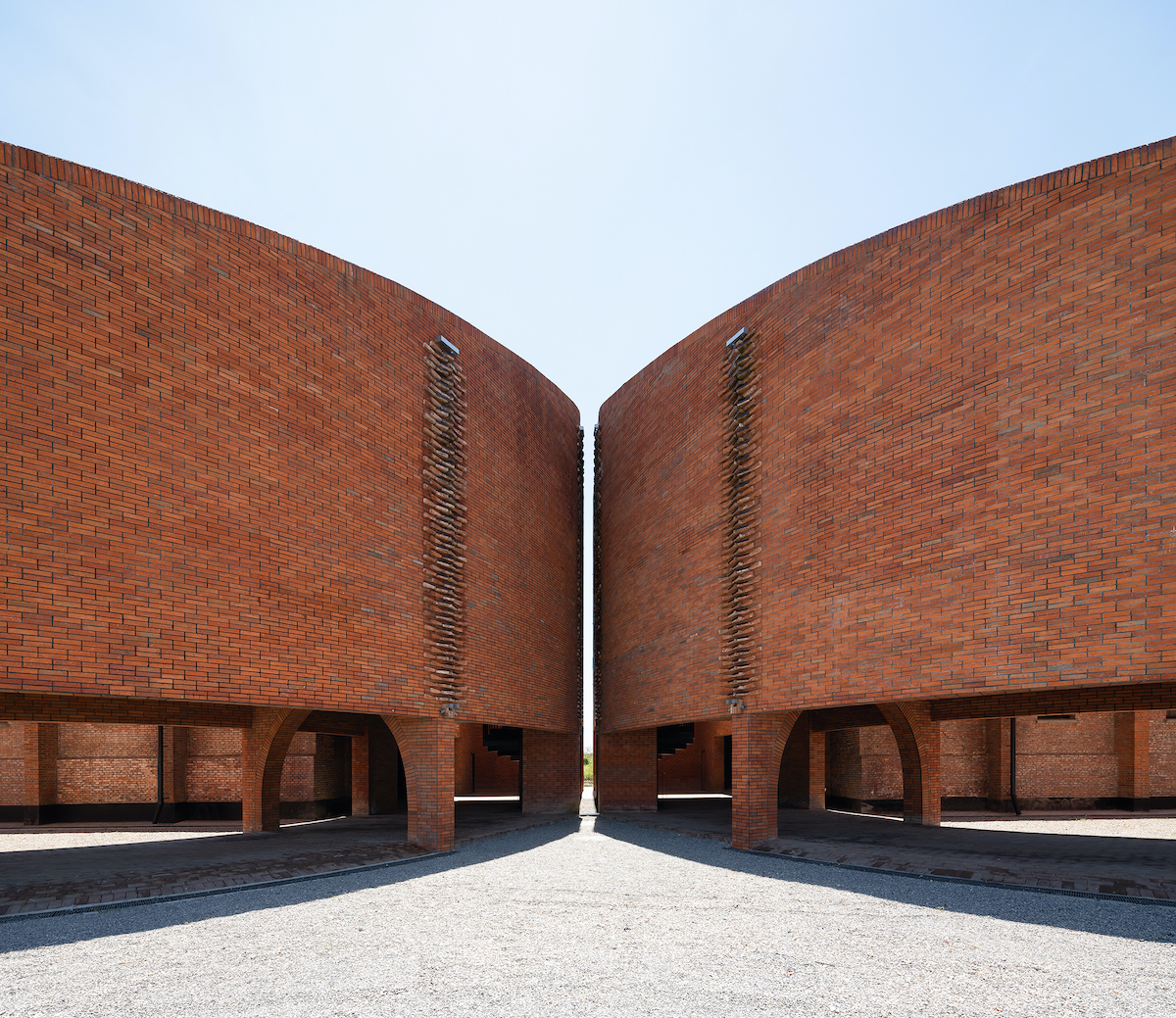
Restored granaries that nourish the soul
More than 60 years ago, these two granaries stored wheat and other grains that fed the people of neighbouring Jiaxing City before they were abandoned and fell into disrepair. Today, thanks to a remarkable restoration by Shanghai studio RoarcRenew, they are contemporary art galleries that nourish the souls of the city’s residents and the many visitors to China’s Zhejiang province.

Completed in March this year, the TaoCang Art Centre is another inspiring example of bringing new life and purpose to older buildings, in a way that respects and enhances the original architecture. The vast open interiors and soaring ached ceilings of the granary buildings in the old village of Wangjiangjing have been retained and painted white, to provide a blank canvas for the exhibitions and artwork.

The only other significant changes to the original buildings were the addition of large semi-circular doors at either end and paintings of lotus flowers on the floors. Two new corridors, made from the same traditional red brickwork, link the buildings and house the centre’s offices and support functions. A wheat motif on an external wall is a nod to the centre’s historical purpose, while the floor design in the gallery pays homage to the village’s lotus-flower industry and pond adjacent to the site.

The galleries now host regular exhibitions, ranging from the launch of a new model of Mercedes Benz to a display of the ancient town’s historical relics.
Directed by principal architect Robben Bai, RoarcRenew spent two months on the design followed by six months of construction. The studio was determined to be faithful to the soul of the granaries and the energy within the original design. “The soul of every renewal project is to find out the hidden flow and go with it,” says Robben.